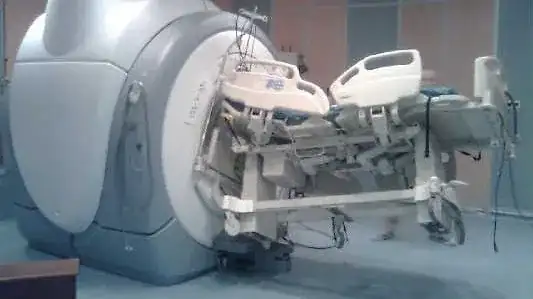EMP damages stuff by inducing voltage, according to Lenz's law.
Induced voltage is proportional to:
- Rate of change of magnetic field, ie amplitude * frequency
- Area of the loop the voltage is induced in, which is basically the size of the antenna
For example if lightning strikes close to your house, this will create a sharp magnetic field spike. The most likely victims are equipments that sit at the intersection of cable loops of large area, like phones, DSL routers, etc. A mobile phone sitting on a table has a very small loop area to act as an antenna, but a DSL modem which is connected to the grid, to a phone line, and to an ethernet LAN has many opportunities to form large loop area antennas from all this cables.
If a device is only connected to mains, the loop area would be the area between the conductors in the mains cable form the device to the nearest lightning arrestor. Since this area tends to be small, these devices are much less vulnerable, unless the lightning bolt directly hits aerial wiring, but in this case we're no longer talking about EMP and induced voltage, but the lightning current circulating directly in the wires.
MRI machines create a strong static magnetic field to align spins, on the order of 1 Tesla. On top of this, coils create a variable field gradient up to 50 mT/m which is not that much, and the HF field is much lower.
It will absolutely induce eddy currents into your body, but your body is not forming a loop. You can imagine many very small loops of tiny eddy currents induced everywhere into the patient, but there is no large loop, so there is no large voltage or current.
Normally during a MRI you will lay down with your arms at your sides. If you do form a loop with your arm by touching your thigh with a finger, then you'll definitely feel a tickle of electricity from the induced current. It's harmless.
Rings and other jewelry are also loop antennas.
What's dangerous in a MRI is not the induced current from variable magnetic fields, it's the static field which will grab anything ferromagnetic and suck it into the machine.

Oxygen cylinders, chairs, whatever, if it gets near the big magnet it'll accelerate like a rocket and shoot through the hole in the toroid magnet with enough force to crush or perforate whoever is inside. Ferromagnetic objects are most attracted to the center of the torus, which is where your head is if you're doing a head MRI, so it's important to be careful. If a steel pen gets in there, they'll need a winch to pull it out.

The problem with pacemakers is not the pacemaker being zapped by the field, it's the force pulling on it and causing it to move inside the patient and turn his insides into mush. Likewise if you go in a MRI with a cellphone it'll probably survive the magnetic field, but it'll end up inside your head.

